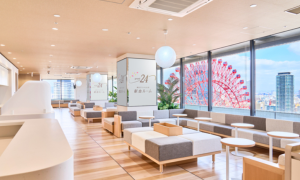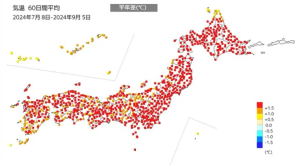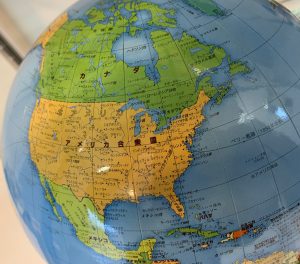Re: A news item and subject which I just want to check out (156) November 22, 2024
It is already towards the end of November. Beautiful Christmas lights sparkle in the night sky all over the city and we can also hear Christmas songs playing from somewhere. Along with that, I fondly remember a large Christmas tree (European spruce 21-30 meters tall) placed at Rockefeller Center, in Midtown Manhattan when I worked in New York more than 40 years ago. The lighting ceremony is held as a grand event every year and this year it will be held on December 4. This traditional ceremony started in 1933 (opening year of Rockefeller Plaza).
And around this time of year, with the arrival of severe cold (minimum temperature minus 15 degrees Celsius) in Manhattan, the white steam rising from manholes seen all over the city is a winter tradition.
■■What I have recently thought and focused on:
■Is Japanese economy experiencing deflation or inflation?
In the House of Representatives election held on the other day, each political party announced various economic policies. For instance, Prime Minister Ishiba claimed that “the top priority should be to completely overcome deflation”. On the other hand, he advocated for “economic measures to overcome rising prices”. The original meaning of “deflation” is the opposite of “inflation” and “a decline in prices”. But prices are rising. In reality, consumer price index in September increased by 2.4 % compared to the same month of the last year and has risen for 4 consecutive months, and corporate goods price index (wholesale price index) in October increased by 3.4 % compared to the same month of the last year and eventually this will be reflected in consumer prices. Taking the above into consideration, he is using the word of deflation to mean “economic slump or recession”. In other words, it seems to me that this is to justify the extra budget (economic measures) where the demand is strong, regardless of the ruling and opposition parties.
By the way, in Japan, real wages in 2023 decreased by 2.3 % compared to the previous year. This biggest reason is that wages increased but total consumer prices rose even more, by 3.8 %. The Democratic Party for the People called this as “wage deflation” in this election, and captured the hearts of young people with the slogan “increase take-home pay” and significantly increased their seats from 11 to 28. And the said party makes campaign promises to raise “annual income barrier” from 1.03 million yen to 1.78 million yen and to “lift the freeze on the trigger clause” (abolition of interim tax rates). I think that “annual income barrier” is a typical example of institutional fatigue and a hike to a certain level is inevitable in order to secure a workforce. On the other hand, lifting the freeze triggers companies and consumers to refrain from buying and last-minute demand by fluctuations of gasoline tax (national tax and local tax), and market turmoil is expected. I think that the disadvantages outweigh the advantages.
Well, regarding the issues with current rising prices, the cause is not due to “demand-pull” based on increased consumer spending and manufacturing production, but rather due to “cost-push” based on higher raw material costs due to yen depreciation and soaring labor costs due to labor shortage. Under such situations, the number of bankruptcies of companies that can’t pass on costs reached the 900 s in October for the first time in 11 years. Of these, small and medium-sized enterprises accounted for less than 80 %. But for securing future talent and implementing DX and AI, industry restructuring and elimination will be inevitable.
Otherwise, zombie companies are being preserved and it is impossible to improve the lowest labor productivity among major advanced countries. The government should allocate more funds to “structural reform or improvement of industries (surgical operation)” rather than “temporary remedies”.
Current Japanese economy is in a closed state where potential growth rate is less than 1 %, and the underlying causes are largely due to structural factors such as ① anxiety about the future (health and social security such as pension, nursing care and so on) ② shrinking domestic market due to declining birthrate and aging population and population decline ③ lag in the high-tech and digital sector ④ lack of human resources to match the changing times.
Repeated short-time measures or pork barreling policies could potentially worsen the fiscal situation.
And regardless of the policy pursued, the issue of funding can not be avoided. In that situation, ① increased revenue from economic growth ② expenditure reform ③ tax hike can be considered. ① is ideal but it is not easy. Both ② and ③ are quite painful. The Prime Minister must sometimes have the “resolve” and “courage” to make the public to swallow “bitter medicine”, but it is not easy under the current power base that lost badly in the last election.
■I visited Seoul, South Korea for the first time in 10 years.:
Last week, I visited Seoul on a two-night, three-day schedule to meet my South Korean friend for over 40 years. Flight time from Kansai International Airport to Seoul is only about 1 hour and 40 minutes. But I get the impression that South Korea is still “close yet distant”. This visit is the first time in about 10 years partly due to the impact of corona disaster. This friend has served as Honorary Consul-General of Kingdom of Bhutan in South Korea for more than 20 years, and in his introduction, I had served as Honorary Consul of Kingdom of Bhutan in Osaka for 11 years until 3 years ago. Encounters are strange things. And he was extremely pleased that his grandson completed his mandatory military service (2 years from 18 years old) and came back this time. Such thing makes me keenly aware of the difference between Japan and South Korea. By the way, I feel the danger of Japan-South Korea relations due to confrontation between the president and opposition party, but I will not go into more about it here.
I was blessed with good weather during my stay in Seoul, and I was shown around a Korean Folk Village that is about one hour drive from the city, and bright red and yellow autumn leaves were splendid. And traditional Korean dish (kaiseki cuisine in Japan) was delicious but more than that, I can’t forget the taste of ginseng chicken soup (samgye-tang) and Korean style barbecue (bulgogi) that I definitely wanted to try. Incidentally, the traffic situation in Seoul is extremely congested and I almost missed my return flight.
■A common issue between Japan and South Korea: declining birthrate and aging population and labor shortage→necessity of securing foreign workers
South Korea is also struggling with low economic growth like Japan. Incidentally, last year’s growth rate was 1.4 % year-over-year (in Japan, 1.9 %). The growth rate of the most recent July-September quarter was 0.1 % increase compared to the previous quarter. In particular, exports are sluggish.
And the declining birthrate is progressing more in South Korea than in Japan, and total fertility rate (the average number of children that are born to a woman over her lifetime) in 2023 dropped to 0.72 (in Japan,1.20) and South Korea is facing “an exceptionally low birthrate” that is unprecedented on a global scale. At the same time, the aging rate that the percentage of people 65 years old or over in the total population is 19.2 % now (in Japan, 29.3 %) and progressing at a faster pace than in Japan. It is said that it will be over 21 % (super aging society) by 2026 and 34 % by 2040 on per with Japan and after that, it will be surpassed.
Therefore, acceptance of foreign workers is rapidly expanding in South Korea to make up for the labor shortage. And it increased the number of industries for employment permits and the limit was tripled over three years. Specifically, the annual limit that was about 60,000 in 2021 has been increased to 120,000 in 2023 and to 166,000 in 2024, and new employment in the food and beverage industry, accommodation industry and aquaculture industry has been approved. Incidentally, the number of foreign workers in Japan was 2.05 million in 2023, but by 2030, 3.42 million will be needed and by 2040, 5.91 million will be needed. It is estimated that there will be shortages of 0.77 million and 0.97 million, respectively. By the way, South Korea is paying wages (271,000yen, manufacturing industry in 2022) higher than those in Japan and Taiwan in order to secure foreign workers competing with both countries. This is significantly exceeding 212,000 yen (the average of technical interns in Japan in 2022) and 143,000 yen in Taiwan. It seems to me that the competition for foreign workers among the three countries will continue to intensify.














































































